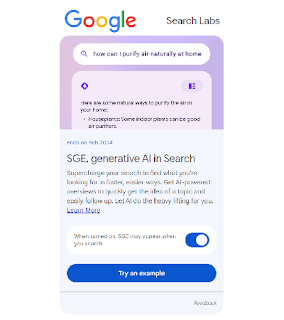10 Amazing Facts About Artificial Intelligence You Never Knew
Get ready to be amazed by these 10 little-known facts about Artificial Intelligence (AI). From creating art and music to saving endangered species, find out how AI is transforming our world.
Artificial Intelligence (AI) is a rapidly evolving field that has transformed the way we live, work, and interact with technology.
With advancements in machine learning, neural networks, and natural language processing, AI has become an integral part of our daily lives.
Despite its prevalence, there are many interesting and surprising facts about AI that you may not know. In this article, we will explore 10 fascinating facts about artificial intelligence that will surprise you.
- The term "Artificial Intelligence" was coined in 1956.
- The first AI program was written in 1951 by Christopher Strachey.
- The first chess computer program was developed in the early 1950s.
- AI has been used to help diagnose diseases such as cancer and heart disease.
- AI is used in self-driving cars to help with object recognition and decision-making.
- AI is used in social media to help identify and remove fake news and hate speech.
- AI is used in finance for fraud detection and investment predictions.
- AI can create art, music, and even write articles.
- AI is used in the gaming industry to create more realistic environments and characters.
- AI is being used to help save endangered species and protect the environment.
- Now, let's dive deeper into each of these fascinating facts.
1. The term "Artificial
Intelligence" was coined in 1956.
The term "Artificial Intelligence" was first used at the Dartmouth Conference in 1956.
The conference was a gathering of leading scientists and researchers in the field of AI, including John McCarthy, Marvin Minsky, Nathaniel Rochester, and Claude Shannon.
The term was coined to describe the process of creating machines that could perform tasks that would normally require human intelligence.
2. The first AI program was
written in 1951 by Christopher Strachey.
Christopher Strachey, a computer scientist at the University of Manchester, wrote the first AI program in 1951.
The program was designed to play a game called "checkers," and it was able to play at the level of an average human player.
3. The first chess computer
program was developed in the early 1950s.
In the early 1950s, computer scientists began developing computer programs that could play chess.
The first chess computer program, called "NSS," was developed in 1951 by Dietrich Prinz. In 1957, a computer program called "The Turk" was developed that could play chess against human opponents.
4. AI has been used to help
diagnose diseases such as cancer and heart disease.
AI has been used in the medical field to help diagnose diseases such as cancer and heart disease.
By analyzing medical images and data, AI algorithms can help detect diseases at an early stage and provide more accurate diagnoses.
5. AI is used in
self-driving cars to help with object recognition and decision making.
Self-driving cars use a variety of AI technologies, including computer vision and machine learning, to help with object recognition and decision making.
AI algorithms are used to detect and identify objects such as other vehicles, pedestrians, and traffic signals, and to make decisions such as when to change lanes or brake.
6. AI is used in social
media to help identify and remove fake news and hate speech.
AI algorithms are used in social media to help identify and remove fake news and hate speech.
By analyzing content and user behavior, AI can help identify and flag content that is false, misleading, or harmful.
7. AI is used in finance for
fraud detection and investment predictions.
AI is used in the finance industry for fraud detection and investment predictions.
By
analyzing financial data and market trends, AI algorithms can help detect
fraudulent transactions and predict investment opportunities.
8. AI can create art, music,
and even write articles.
AI is not just limited to analytical tasks, but it can also perform creative tasks.
AI algorithms can create stunning works of art and compose music pieces that sound like they were composed by humans.
In fact, AI is being used to create digital art that has sold for millions of dollars in the art world.
Furthermore, AI is now capable of generating written content like news articles and product descriptions.
9. AI is used in the gaming
industry to create more realistic environments and characters.
AI is increasingly being used in the gaming industry to create more immersive and interactive games.
By using AI, game developers can create more realistic environments, characters, and game mechanics.
For example, AI can be used to create intelligent non-player characters that can interact with players in more sophisticated ways.
In addition, AI can analyze data from player behavior and feedback to improve game design and provide personalized experiences.
10. AI is being used to help
save endangered species and protect the environment.
AI is also playing a vital role in wildlife conservation and environmental protection efforts.
AI-powered drones and cameras can monitor and track endangered species, gather data on habitat conditions, and detect poaching activities.
This technology can help wildlife conservationists to make more informed decisions and take action before it's too late.
In addition, AI is being used
to analyze satellite data and climate models to help predict and mitigate the
effects of climate change.
Conclusion
AI is a rapidly evolving technology with endless possibilities.
From healthcare to education, entertainment to wildlife conservation, AI is transforming various aspects of our lives. As we continue to push the boundaries of what's possible with AI, it's important to recognize both its benefits and potential risks.
As
with any technology, it's crucial to develop ethical guidelines and regulations
to ensure that AI is used for the greater good.




Comments
Post a Comment